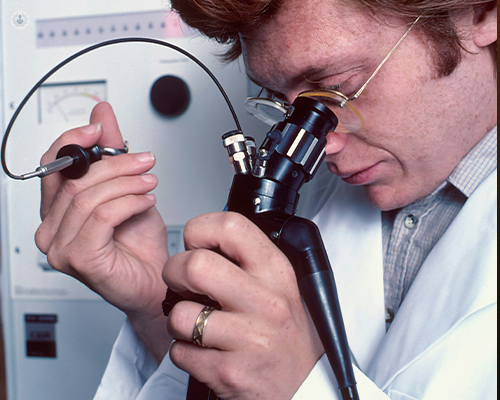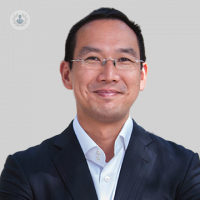Bronchoscopy: a lungful
Escrito por:A bronchoscopy is a medical exam to view the inside of the airways and lungs, as part of a diagnostic process for pulmonary or respiratory ailments. In this article, a consultant thoracic and cardiothoracic surgeon explains this procedure.

What is the purpose of a bronchoscopy?
Bronchoscopies are performed for several reasons, such as:
- Diagnosing lung problems like a persistent cough with an unknown origin, coughing blood, or shortness of breath
- Identifying infections in the lungs and bronchi
- Collecting tissue of the lungs or throat (biopsy) for analysis
- Examining the lymph nodes near the lungs
- Checking for or removing obstructions of the airways
- Monitoring progress after a lung transplant
A bronchoscope is a long, thin tube (it can be rigid or flexible) that Is equipped with a camera and a light at the end so that the doctor conducting the bronchoscopy can view the inner goings of the body from the eyepiece attached to the other end of the tube. The tube is hollow so that other instruments can pass through and access the organs that are being examined, such as punches for biopsies or an electrocautery probe to address tumours. For lung cancer patients, bronchoscopes with built-in ultrasounds are used to check the lymph nodes, in a procedure called an endobronchial ultrasound (EBUS).
How is a bronchoscopy performed?
It is a minimally invasive procedure, but it does require that the patient is relaxed as the bronchoscope is inserted through the mouth or nose and into the throat. The patient will be lying down on the examination bed or table, with their head slightly elevated. It is imperative that the patient does not panic or seize up, as this can cause serious harm. To prevent this, patients are given sedatives via intravenous administration, or they may be put under a general anaesthetic. To further the patient’s comfort, a numbing, local anaesthetic will be applied to the throat and mouth or nose. The examination can take around 30 to 90 minutes, depending on the purpose of the bronchoscopy. Once the bronchoscope is removed, it is likely the patient will remain in the recovery area until the sedation or anaesthetic wears off.
Afterwards, they can go home but they should avoid eating or drinking immediately after as their throat will be scratchy and raw, and will remain so for a few days.
What are the risks of a bronchoscopy?
There are possible complications that can happen due to a bronchoscopy. The airways and vocal cords can become irritated and inflamed, and may be vulnerable to infection following the examination. The bronchoscope could puncture the airway, or the lung which will lead to a collapse lunch (pneumothorax). There could be small amounts of blood in the patient’s spit or cough residue after the bronchoscopy; if the patient had a biopsy this is to be expected, but if the blood is still showing up after a few days or if it is a lot of blood, then the doctor should be informed.
Results from a bronchoscopy can reveal pathologies like tuberculosis, lung cancer or cancer in the chest, stenosis (narrowing) of the trachea, damage in the lungs or throat, and diseases of that area.
If you would like to know more about bronchoscopy, you can consult with a specialist via Top Doctors.


